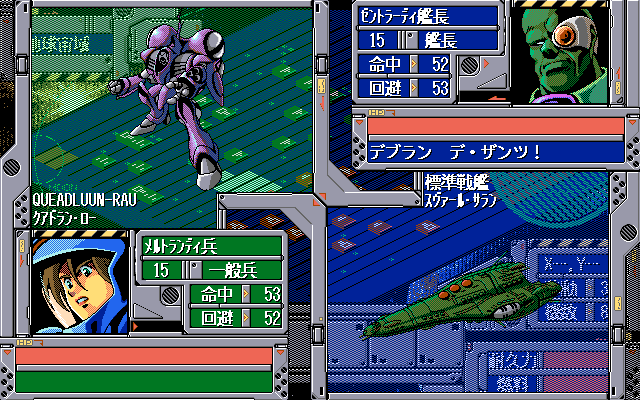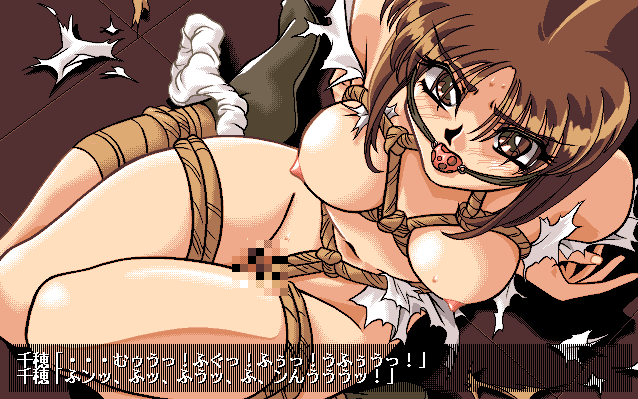You’ve probably wondered where these otherworldly pixel-art images seen across the web are coming from. The answer is the PC-98.

Pastel cities trapped in a timeless future-past. Empty apartments drenched in nostalgia. Classic convertibles speeding into a low-res sunset. Femme fatales and mutated monsters doing battle. Deep, dark dungeons and glittering star ships floating in space.
All captured in a eerie palette of 4096 colours and somehow, you’re sure, from some alternate 1980s world you can’t quite remember…
The Style of ‘PC-98’
Now beloved by legions of obsessive artists and collected by accounts like Noirlac, ITEM, and Densetsu.ch, this now-forgotten art style native to Japan is known, shorthand, as “PC-98”

With it’s unique style of colours and hand-made gradients, it has spawned an underground subculture of collectors and creators dedicated to keeping the unique PC-98 art form alive.

Drawn painstakingly one pixel at a time, with a palette of 4096 possible colours, pushing the limits of these 80’s era machines memory, these early graphic artists and hackers alike have left an indelible mark on the world of digital art and internet culture, only to be forgotten in the passing of time.
But what made this boring business computer from Japan so special?
What is a ‘PC-98’ anyway?

One of Japan’s earliest and most dominant computer makers, electronics giant NEC arrived early on the home computer market, pretty much obliterating domestic competitors like Hitatchi and Fujitsu and swallowing a whopping 60-70% of the market up from IBM by the mid 80s with their PC-88 / series of computers.
The reason? The Japanese market needed hardware much more capable than the business built IBM PC, anemic early Macintosh computers or the home consoles of the era where it counted most: graphics.
Then came the PC-9800. Using custom chips designed to deliver rich colour and complex Japanese characters, the NEC machines had 16x the video memory of their American counterparts, leading to an explosion of new game creators putting these features, and their limitations, to use.

While there were countless models in the near 20 year history of the NEC platform, and thousands of programs designed for them, their unique hardware (while capable of many colours, the machines were still extremely slow and incompatible with MS-DOS computers at the time) combined with the style of games created for the PC-98 led it to be jokingly dubbed “The Anime Computer”.

Countless simulation games like Sim City, darker fare like cyberpunk adventures and bullet hell shooters lived alongside stranger, slice of life simulators closer to titles like “The Sims” starring popular comic characters from the world of Anime. The machines speed limits produced a more adult, story driven style of game called a “visual novel” that became a mainstay of the scene over the more arcade driven games coming from the world of Sega and Nintendo.

Metal Gear creator / problematic gaming legend Hideo Kojima got his start on the platform with his classic potboiler “Policenauts”, and perennial weirdo favourite “Corpse Party” started way back in the 90s as a PC-98 game.
So if the PC-98 was so popular, why don’t we remember it like the Super Nintendo or Playstation, or even more obscure computers like the Sinclair, so lovingly honoured in Black Mirror’s Bandersnatch.
Well, the thing about these games is that they’re…weird.
Like, really weird.
Obscenely weird.
Enter the Doujins: PC-98’s rebels
Never heard of classics like “Variable Geo 2: The Bout Of Cannibalistic Goddess?” or “Dead Of The Brain”?
Haven’t played battleship against Space Hitler in Void Vanity Fleet or dodged a sex-crazed Captain Hook in an all female Peter Pan parody called “Neverland”?
I’m guessing not.

Equally important to the early success of the PC-98 as the corporate users were what are known as “Doujins“.
Named from the Japanese slang for “hobby group”, these dedicated legions of game designers, artists and pixel pushing perverts created literally thousands of titles for the platform (At last count their were over 6000 PC-98 games in the world.)… with new games still released to this day.

A wild west of avant-garde adventure games and bizarre digital storybooks, these developers operated in the fringes of late 80s and early 90s popular culture in Japan. Wildly popular with the Otaku (Japan’s culture of hermetic male obsessives…sort of an primordial Incel, if you will), these games are… intense to say the least.

Constantly skirting the threat of copyright infringement, Doujin or “Fan-Softs” put popular anime or game characters in strange, very often sexual, situations, yet were wildly popular among even mainstream audiences.
Not content with simple cut and paste jobs, Doujin PC-98 developers and artists pushed the limits of what these early machines could do, and the limits good taste, one upping each other with each release.

Themes like rape, torture and cannibalism were among many taboo subjects shadowy developers of the PC-98 scene created in parallel with safer, more mainstream titles like Might and Magic, and imports of American games like Doom and Alone In The Dark.
Writer Kyle Bradford called the PC-98 Eroge or “Erotic Game” culture “a relic from an age of Japanese Otaku culture seemingly obsessed with the obscene”

Studios with nonsensical names like “Software Creation Tips” or “Apple Pie Coffee Break” would announce titles in a chatroom or magazine classifieds, release a handful of bizarre or pornographic PC-98 games mailed directly on disk, then disappear months or even weeks later, never to be seen again.
Some of these developers even went on to create classic franchises in mainstream gaming, funded in part by their X-Rated fundraising in the PC-98 scene and the lessons learned squeezing performance from these now near ancient machines.
End of the PC-98 era
So what happened?
Windows based machines quickly sailed past the early performance lead of NEC’s PC-9800, and the sheer variety of clones and new hardware displaced their monopoly. The market share of the PC-98 standard fell from 60% to 33% in just five years, and NEC finally abandoned the PC-98 in favour of the global standard.
By the 2000s, NEC had completely abandoned their computer platform and developers had long moved on to new systems with far superior hardware and 3D graphics.
Developers still operating on the fetishistic fringes of Eroge migrated en masse to the uncontrolled world of Microsoft and Apple machines, free from the ban on adult games from major publishers like Sega and, eventually NEC themselves.
Widespread broadband internet meant the Otaku of Japan could satisfy their fetishes without need for disks or “Doujinsoft” direct mail, and, within a few years most PC-98 machines were relegated to junk shops and basements, left to collect dust.
But a culture dedicated to preserving the platform holds on.
With small teams, sometimes a single developer, Doujins still compete in hack-a-thons and game competitions turning out games in as little as 24 hours.
New games continue to pop up, and a small emulation scene translates some of the better titles to be enjoyed by new generations of weirdos, never to be truly forgotten.
While it’s focus on the obscure, obscene and downright strange, it’s probably likely you’ll never play any of these games, but their influence continues to be felt today in modern sub-cultures like Vaporwave music, animators like the infamous Paul Robertson, and modern developers that are bringing some of the platforms DNA to modern games like “World Of Horror“.
Long live the weird and wonderful world of the PC-98.